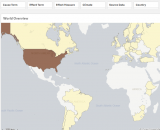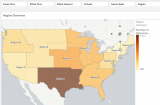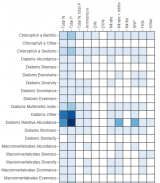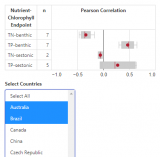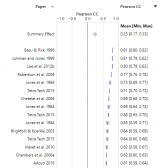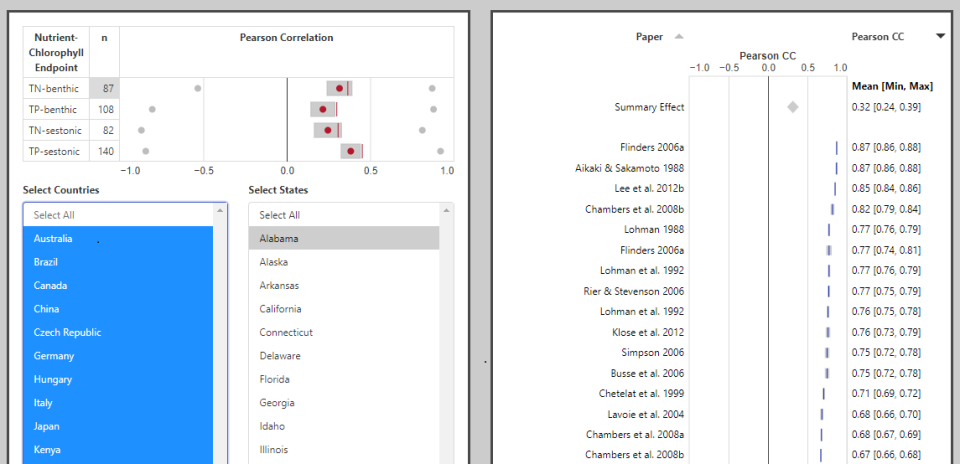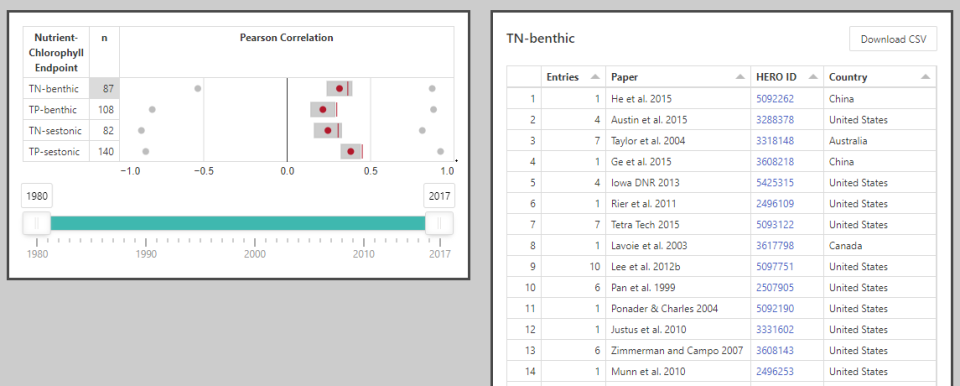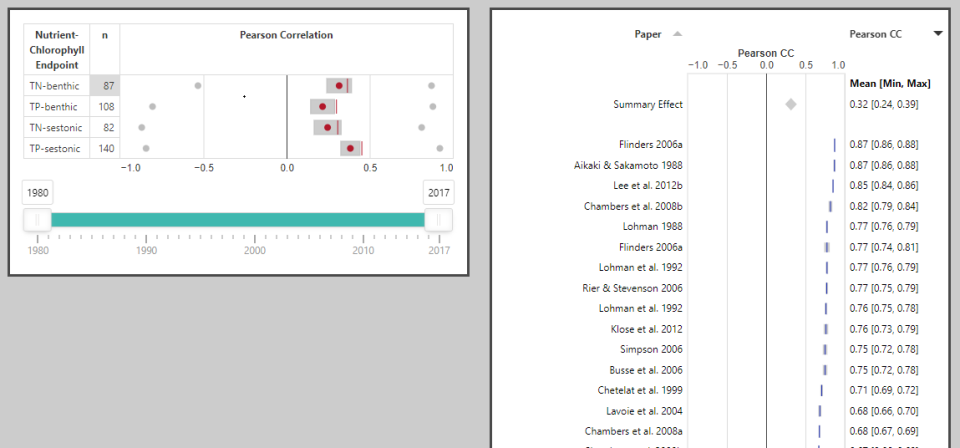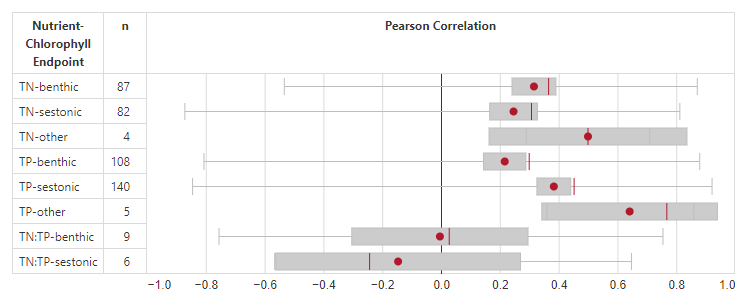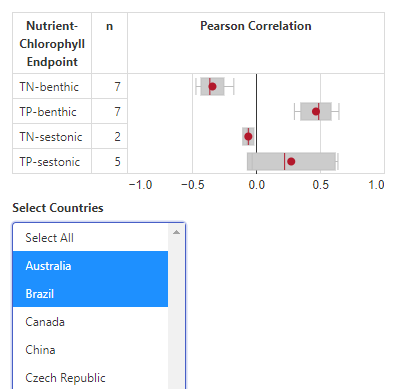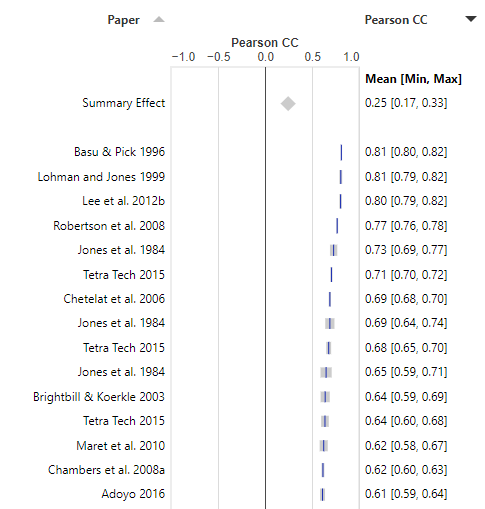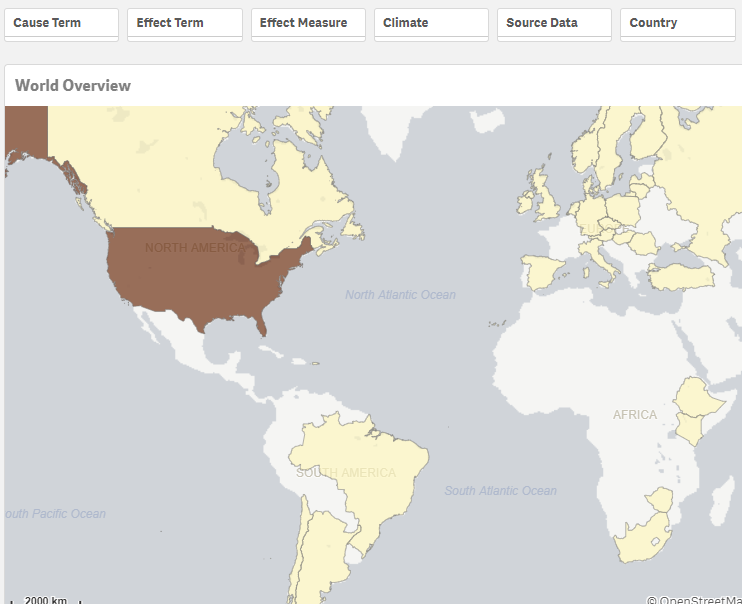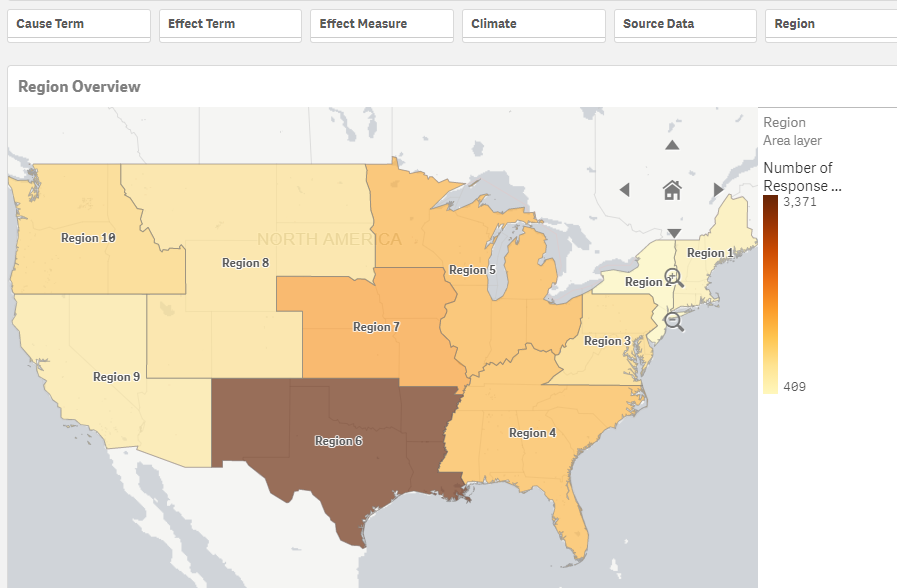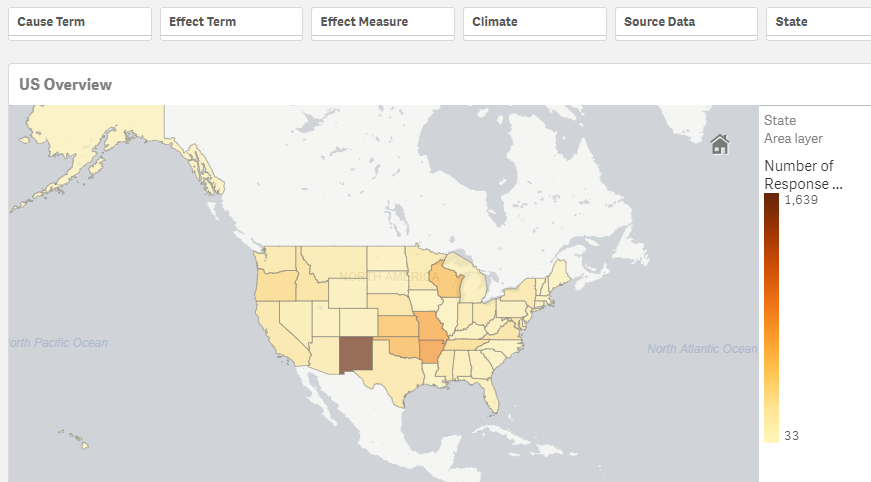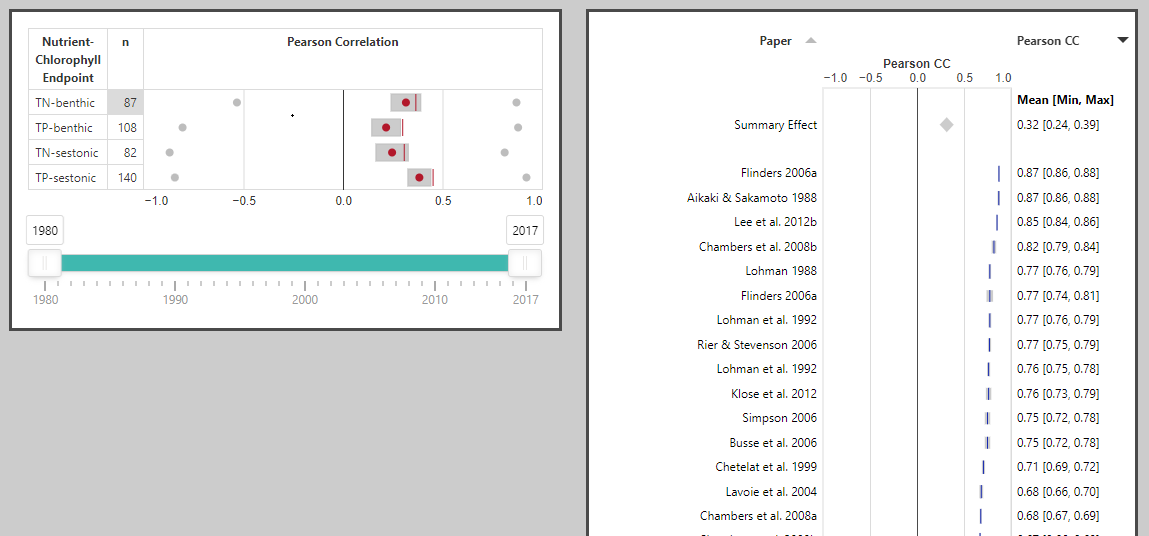Stream Nutrients Project
Background
Eutrophication of freshwater ecosystems resulting from nitrogen and phosphorus pollution is an issue across the globe. Despite recognition of the problem by scientists and stakeholders, decision-makers still need rigorous synthesis of scientific evidence for nutrient management, especially in streams and rivers. Drawing inferences about how nitrogen and phosphorus concentrations affect stream biota is complicated by:
- Exposure to multiple interacting environmental factors;
- Complex and indirect causal pathways involving diverse organisms;
- Legacy (historic) nutrient sources; and
- The naturally high spatial and temporal variability of running water systems.
The Stream Nutrient Project aims to empower stakeholders to identify, manage, and restore streams and rivers impaired by eutrophication and maintain currently unimpaired systems. A critical first step is to determine the nutrient levels that affect ecosystems.
Nutrient Systematic Reviews
EPA conducted systematic reviews of the scientific literature to examine how nutrient stressors affect algae and macroinvertebrates in stream and river ecosystems. These reviews comprehensively synthesized published studies investigating how total nitrogen and total phosphorus concentrations affect three biological responses:
- Chlorophyll a (benthic and sestonic);
- Diatoms; and
- Benthic macroinvertebrates.
The Stream Nutrients Project collates the evidence records created in these reviews and makes them available to EcoDIVER users. After screening thousands of articles, we identified nearly 300 relevant documents, published from 1972-2018. Each of these documents reported at least one quantitative relationship between nutrient stressors and biological responses. We created evidence records by extracting more than 200 categorical and quantitative fields of information for each of these relationships.
View the Evidence
Tips for viewing and interacting with the visualizations
- If possible, view the visualizations on a laptop or desktop computer using the maximum window size. When using a mobile device or viewing the visualizations in a small window, the layout may change (e.g., new panels may display below the initial panel rather than to the right of the initial panel) and titles or axis labels may be cut off. Remember to scroll right and/or down in the window to see visualizations in their entirety.
- You may see empty boxes when you first click on the heat map or modified boxplot visualizations, as the visualization retrieves the data. There may also be a short delay for maps and distribution plots to update as filters are applied.
- Each visualization includes helpful information on how to view and interact with that visualization, under either the blue Help button at the top right of the visualization (for the heat map, box plot, and forest plot visualizations) or in the text at the top of the visualization (for the map-based and histogram visualizations). Please read this information before interacting with the visualizations.
- The heat map and modified boxplot visualizations all work in the same general fashion: (i) an initial figure is displayed at the left; (ii) hovering over a cell or panel in that figure displays relevant summary information; and (iii) clicking on a cell or sample size (n) value in that figure displays a data table or additional figure at the right (or below, if you are viewing the visualization in a small window).
- If you scroll when your cursor is hovering over plots in the map-based and histogram visualizations, you will zoom in/out on these plots to view information at different scales.
- See the Stream Nutrients Visualization Guide page for additional information on how to navigate specific visualizations.
The visualizations for this project do not reflect study quality. Quality of evidence can vary based on factors such as study design and transparency of data collection and analysis methods. In addition, when filtering by geographic location, please keep in mind that filtered results may not be based solely on that geographic location (i.e., results may be based on data from the specified geographic location(s) combined with data from other locations). For the full details of any study included in this project, please consult the original citation.
You can view and download the list of articles included in the Stream Nutrients Project by visiting the Health and Environmental Research Online (HERO) project page for this effort. The full dataset of extracted data used in the Stream Nutrients Project is accessible from the Environmental Dataset Gateway.
Credits: Extracted dataset (Micah Bennett, David Gibbs, Sylvia Lee, Caroline Ridley, Kate Schofield); meta-analysis models (Micah Bennett, Sylvia Lee, Ben Washington); visualizations (Ray Burton, Nikhil Chakrapani, Tiffany Jones, Sylvia Lee, Caroline Ridley, Kate Schofield).
Citation: Bennett et al. 2021. Response of chlorophyll a to total nitrogen and total phosphorus concentrations in lotic ecosystems: a systematic review. Environmental Evidence 10:23.

